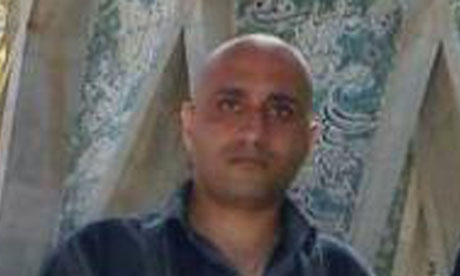 Iranian blogger Sattar Beheshti said he was receiving threats that his mother would soon be wearing black if he does not shut up. A few days later, Beheshti�s mother was actually wearing black. Beheshti was arrested by what is known as the �electronic police� following his constant criticism of the regime on his blog. Beheshti, who was in his early thirties, died of torture in jail in Tehran and his black-clad mother started a long and arduous journey with the judiciary.
Iranian blogger Sattar Beheshti said he was receiving threats that his mother would soon be wearing black if he does not shut up. A few days later, Beheshti�s mother was actually wearing black. Beheshti was arrested by what is known as the �electronic police� following his constant criticism of the regime on his blog. Beheshti, who was in his early thirties, died of torture in jail in Tehran and his black-clad mother started a long and arduous journey with the judiciary.The mother�s mission seems almost impossible, for she needs to prove that her son was tortured to death in jail and that, therefore, the authorities are to be held accountable for his death. These same authorities sent security forces to where the 40th day commemoration of Beheshti�s death was held and beat up members of his family, including the mother.
Beheshti�s tragedy looks similar to that of the Egyptian Khaled Saeid, who was beaten to death by the Egyptian police and who is considered to be one of the reasons for the eruption of the January 25 Revolution. But the Iranian case looks more complicated because activists in Iran have been facing fierce clampdown since the protests that followed the 2009 presidential elections. A study conducted by Human Rights Watch revealed that dozens of Iranian rights activists, bloggers, journalists, and lawyers fled the country after being targeted by security and intelligence apparatuses. The number of Iranian seeking asylum has, thus, multiplied in the past two years.
Regime polices turned Iranian activists into either prisoners or refugees and the noose is tightening as the space allowed for civil society keeps shrinking. The Iranian regime specifically targets youths, particularly those well-versed in advanced means of communication. It is noteworthy that blogs by Iranian activists have exceeded 700,000, mostly created by youths.
These facts, together with the case of Beheshti and the cases of dozens others who are either jailed or exiled, reveal the insurmountable gap between the regime and the youths in Iran. The width of this gap can be detected from the fact that almost 70 percent of Iran�s population is below 30 years old.
The problem is that the Iranian regime does not deal with those facts and, instead, behaves with the same intransigence that drives it to support the Syrian regime and continues to wage war against its people.
By Al Arabiya
The Iran Project is not responsible for the content of quoted articles.










